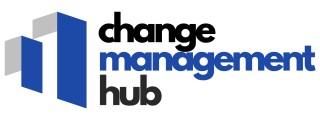
Understanding the role of an online territory manager
What does an online territory manager do?
In the context of modern congregations, an online territory manager (OTM) plays a vital role in organizing and overseeing congregation territories. This role is especially important for Jehovah’s Witnesses, where managing congregation territories efficiently supports field service activities. The OTM uses specialized applications designed to help manage, assign, and track territories, ensuring that every area receives attention and that data remains accurate and up to date.
Key responsibilities and daily tasks
- Managing congregation territories: The OTM creates, updates, and assigns territories for field service. This includes using digital tools to map out areas and keep records current.
- Supporting congregation members: By acting as a territory helper, the manager assists witnesses in accessing and returning territories, often through a secure login system.
- Data and privacy: Handling sensitive congregation data requires strict adherence to privacy policy and security standards, especially when using mobile devices or online platforms.
- Scheduling and communication: The OTM coordinates with congregation members, using schedulers and communication tools to ensure smooth territory assignments and returns.
- Adapting to digital tools: With the shift to online territory management, managers must stay updated on the latest applications designed to help manage congregation territories efficiently.
Why the role is evolving
The move to online territory management is driven by the need for flexibility, accuracy, and accessibility. Congregations now rely on digital solutions to manage territories, making it easier to assign, track, and analyze field service activities. This shift also means that managers must be comfortable with new technologies and policies, adapting their approach as tools and congregation needs evolve.
For a deeper look at how vision and workflow design enhance change management in digital territory management, you can explore this resource on enhancing change management with vision flow.
Key challenges in digital change management
Common Obstacles When Managing Digital Territories
Online territory managers (OTMs) face unique challenges as they help congregations manage territories and coordinate field service. The digital environment brings both opportunities and obstacles, especially when it comes to adapting to change. Understanding these challenges is essential for anyone looking to design, create, or manage congregation territories more effectively.
- Adapting to New Tools: With the rise of mobile devices and applications designed to help Jehovah’s Witnesses manage congregation territories, managers must quickly learn new platforms. This can be overwhelming, especially when privacy policy updates or new features are introduced.
- Data Security and Privacy: Protecting sensitive congregation data is a top priority. Ensuring compliance with privacy policies and managing access rights for helpers and territory managers can be complex, especially when multiple users need to login from different devices.
- Consistency Across Congregations: Each congregation may have its own approach to managing territories, making it difficult to implement a unified policy or scheduler. This can lead to confusion and inefficiencies, particularly when helpers or managers are responsible for multiple territories.
- Communication Barriers: Virtual teams often struggle with clear communication. Misunderstandings can occur when assigning territories, updating field service records, or coordinating with helpers. This can slow down the process and impact the overall effectiveness of the online territory manager.
- Change Fatigue: Frequent updates to online tools or changes in congregation policy can lead to resistance among users. Managers must balance the need for innovation with the congregation’s ability to adapt.
For a deeper look at how to build a strong foundation for change management in digital environments, you can read more at building a strong foundation for change management.
Why These Challenges Matter
Successfully navigating these obstacles is crucial for OTMs and territory helpers. When challenges are addressed proactively, it becomes easier to manage congregation territories, support field service, and help Jehovah’s Witnesses stay organized. The right approach to change management ensures that every application designed to help the congregation is used to its full potential, making the process smoother for everyone involved.
Building trust and communication in virtual teams
Fostering Connection in a Digital Landscape
For an online territory manager (OTM), building trust and maintaining clear communication within virtual teams is a daily challenge. Unlike traditional settings, online congregation territories require managers to rely on digital tools and thoughtful strategies to connect with helpers, witnesses, and congregation members. The absence of face-to-face interaction can make it harder to read cues, address concerns, and keep everyone aligned during periods of change.
- Transparency is key: Sharing updates about policy changes, field service schedules, or new application features helps everyone feel included. Regular communication about how data is managed and how privacy policy is upheld reassures the congregation and builds confidence in the process.
- Leverage digital tools: Using a scheduler or an application designed to manage congregation territories can streamline communication. Features like notifications, mobile access, and easy login options help territory helpers and managers stay connected, even when working from different devices or locations.
- Encourage feedback: Creating channels for helpers and witnesses to sign in, ask questions, or suggest improvements ensures that everyone has a voice. This participatory approach helps managers design and create better solutions for the congregation.
- Consistency matters: Establishing regular check-ins, whether through video calls or group messages, helps maintain momentum and trust. Consistent communication also makes it easier to manage congregation territories and adapt to new service requirements.
Effective online territory management is about more than just technology. It’s about creating a supportive environment where every helper and witness feels valued and informed. For a deeper look at how successful change management can be mapped out, explore the big three upgrade diagram in change management and see how clear communication strategies can drive positive outcomes in digital territories.
Tools and technologies that support change
Choosing the Right Digital Tools for Territory Management
Online territory managers (OTMs) rely on a range of digital tools to manage congregation territories, coordinate field service, and support Jehovah’s Witnesses in their ministry. Selecting the right applications and platforms is crucial for effective change management, especially when adapting to new policies or privacy requirements. The right technology helps managers organize data, schedule activities, and communicate with territory helpers and congregation members across devices.
- Territory management applications: These are designed to help create, manage, and assign congregation territories. Many offer features like mobile access, secure login, and privacy policy compliance, making them suitable for remote or hybrid teams.
- Schedulers and communication tools: Online schedulers and messaging platforms allow managers to coordinate field service, sign up helpers, and keep everyone informed about changes or updates in real time.
- Data and analytics platforms: Tracking progress, analyzing service data, and measuring the impact of changes are easier with integrated analytics. These tools help managers adapt strategies and demonstrate the effectiveness of new approaches.
Design and Privacy Considerations
When choosing or designing an application for congregation territories, it’s important to prioritize user experience and privacy. Applications should be easy to use, accessible on mobile devices, and designed to help Jehovah’s Witnesses manage congregation activities efficiently. Privacy policies must be clear, and data security should be a top priority to protect sensitive information about territories and congregation members.
Supporting Change with Technology
Technology is not just about tools; it’s about enabling people to adapt and thrive during change. OTMs can use digital platforms to provide help, answer questions, and offer ongoing support to territory helpers and congregation members. Features like contact territory forms, online help centers, and real-time notifications make it easier to manage congregation territories and respond quickly to challenges.
| Tool Type | Key Benefits | Considerations |
|---|---|---|
| Territory Management Apps | Centralizes data, streamlines assignments, supports mobile access | Check for privacy policy, ease of use, device compatibility |
| Schedulers & Communication | Improves coordination, real-time updates, supports remote teams | Integration with existing systems, notification settings |
| Analytics Platforms | Tracks progress, measures success, informs strategy | Data accuracy, reporting features, user permissions |
By leveraging the right mix of tools and technologies, online territory managers can better manage congregation territories, support their teams, and adapt to ongoing changes in policy and service design. The right application, designed to help and protect data, is essential for successful change management in today’s digital environment.
Measuring success and adapting strategies
Tracking Progress with Data and Feedback
Online territory managers (OTMs) rely on accurate data to measure the impact of change initiatives. Whether managing congregation territories or coordinating field service, clear metrics help managers understand what’s working and what needs adjustment. Many applications designed to help Jehovah’s Witnesses manage congregation territories include dashboards or reporting features. These tools allow managers to track assignments, monitor login activity, and review scheduler usage across mobile devices.- Assignment completion rates: Monitor how quickly territories are being signed out, worked, and returned. This helps identify bottlenecks or areas where helpers may need additional support.
- User engagement: Analyze how often congregation members access the online territory manager, use the scheduler, or interact with territory helpers. Low engagement may signal a need for better communication or training.
- Feedback collection: Encourage witnesses to share their experiences using the application designed to help manage congregation territories. Feedback can be gathered through surveys, direct contact, or built-in app features.
Adapting Strategies Based on Insights
Change management is not static. OTMs must be ready to adapt their approach as new data and feedback emerge. For example, if the privacy policy is unclear or users have trouble accessing the mobile version, the manager can work with the design team to create improvements. When congregation territories are not being managed efficiently, it may be time to review policies or provide additional training to helpers.| Area | What to Measure | How to Adapt |
|---|---|---|
| Territory Assignment | Completion rates, overdue returns | Adjust scheduler settings, send reminders |
| User Experience | Login issues, device compatibility | Update application design, offer help resources |
| Communication | Feedback volume, satisfaction scores | Enhance contact options, clarify policies |
Continuous Improvement for Lasting Change
The best online territory managers view change as an ongoing process. By regularly reviewing data, listening to helpers, and refining strategies, managers can ensure that congregation territories are managed effectively. This approach not only supports the congregation but also helps Jehovah’s Witnesses adapt to new technologies and service methods. Remember, every policy update, design change, or new feature should be evaluated for its real-world impact—helping to create and manage territories in a way that truly benefits the congregation.Practical tips for online territory managers facing change
Practical ways to support your congregation during change
- Stay visible and accessible. As an online territory manager (OTM), make sure congregation members know how to contact you. Use the application's contact territory feature and keep your login details up to date. This helps witnesses and helpers reach you when they need support with congregation territories or field service assignments.
- Leverage digital tools effectively. Use the scheduler and data management features in your OTM online application. These tools are designed to help you assign, track, and manage congregation territories efficiently, even when working across multiple devices or with mobile access.
- Prioritize privacy and security. Always follow the privacy policy guidelines of your application. Remind your team to sign in securely and avoid sharing sensitive data outside approved channels. This builds trust and reassures congregation members that their information is safe.
- Encourage feedback and adapt. Regularly ask for input from territory helpers and those using the online territory manager. Use their suggestions to improve how you design, create, and manage territories. Adapting your approach based on real experiences helps everyone feel involved and valued.
- Offer training and help resources. Not everyone is comfortable with new technology. Provide simple guides or short video tutorials on how to use the application designed for managing congregation territories. Highlight features like the scheduler, mobile access, and how to manage congregation data.
- Communicate changes clearly. When you update a policy or introduce a new feature, explain why the change is happening and how it benefits the congregation. Use multiple channels—email, app notifications, or service meetings—to make sure everyone is informed.
Checklist for managing change in online territories
| Action | Why it matters |
|---|---|
| Update congregation territory assignments regularly | Keeps field service organized and prevents overlap |
| Review and follow privacy policy | Protects sensitive data and builds trust |
| Use scheduler for territory sign-outs | Improves transparency and accountability |
| Provide ongoing help and support | Reduces frustration and increases adoption of new tools |
| Monitor data and adjust strategies | Ensures your approach stays effective as needs change |
By applying these practical tips, online territory managers can help their congregation navigate change smoothly, making the most of digital tools while keeping people at the center of every decision.













